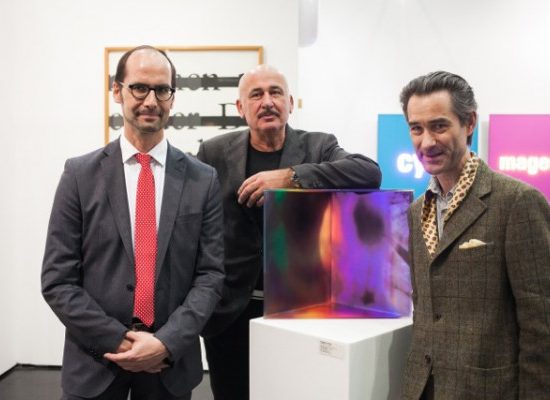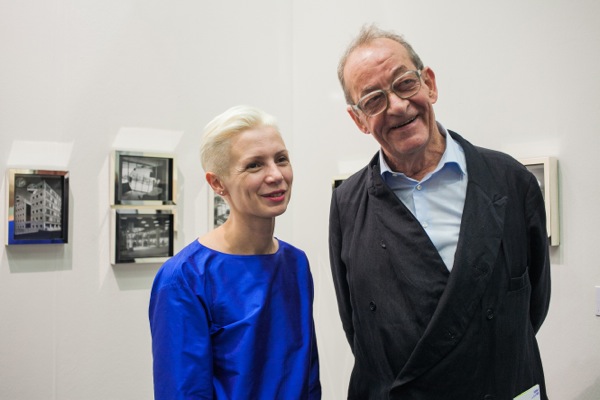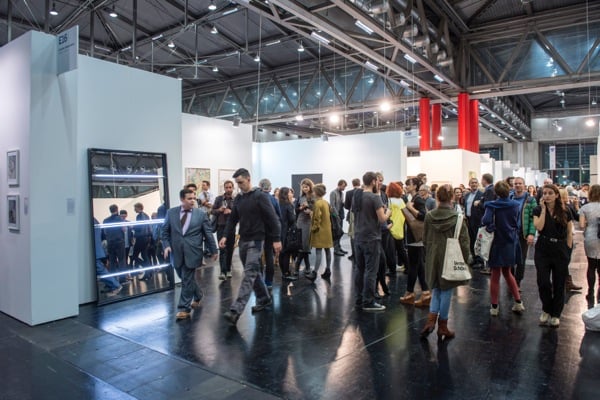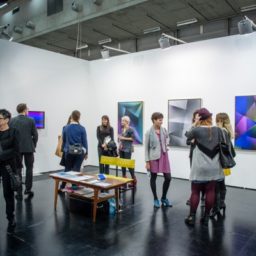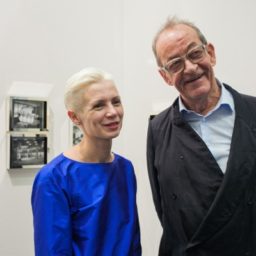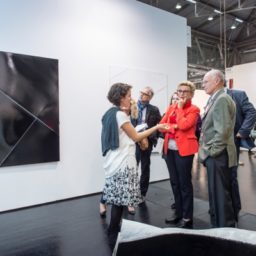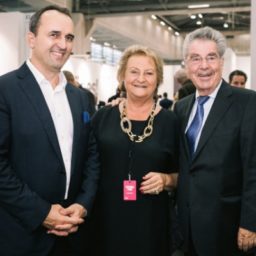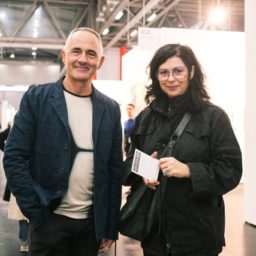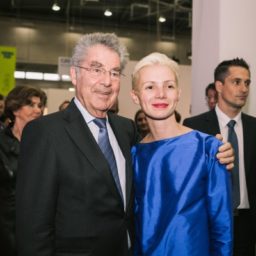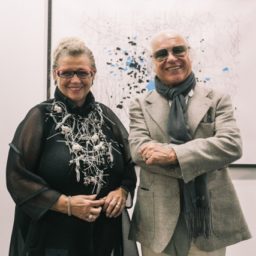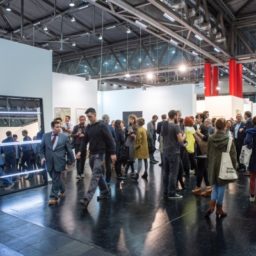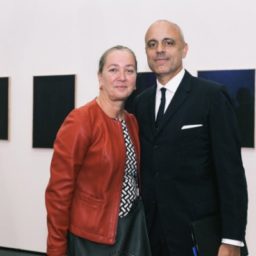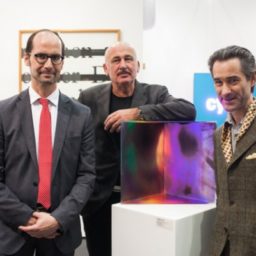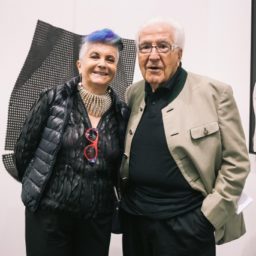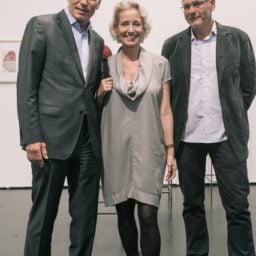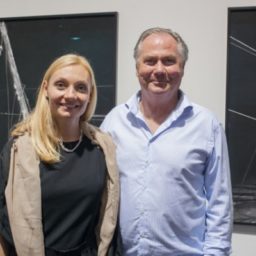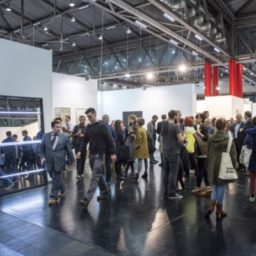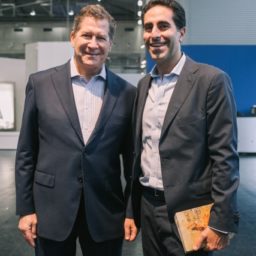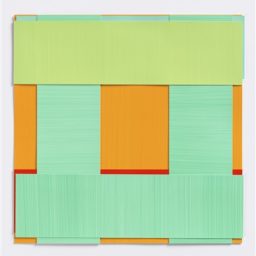In its first year under the sole direction of Christina Steinbrecher-Pfandt, Vienna Fair has hit a new high mark with regard to both international attendance and, more importantly, sales. With few exceptions, dealers across the fair reported a notable increase in sales made during the preview and vernissage, a trend that continued on Thursday and Friday. The vernissage itself saw international collectors, such as New Yorkers Barbara and Aaron Levine. There were also fellow Americans Kira Flanzraich and Carter Pottash, numerous Belgians and Germans, including major museum directors. And members of the Austrian art scene’s upper echelon, Francesca von Habsburg and Austrian Federal president Dr. Heinz Fischer, for example, combed the aisles.
“Sales have definitely improved this year,” Ursula Krinzinger told artnet News on Thursday afternoon as she rushed off to meet Belgian collector Alain Servais, who was giving a talk on collecting. At their main booth, the gallery sold works by Hans Op de Beeck (A character and its scenery, 2014), photographs by Eva Schlegel and Frank Thiel, and a large ink, marker, and graphite on canvas work by Franz Graf. They declined to specify prices.
Krinzinger also gushed that their other booth, in Vienna Fair’s Zone 1—the sector for solo presentations by artists under 35 years old—had done particularly well. They sold several works from that booth by Bernd Oppl during the vernissage. The gallery had bet big on the sector, presenting a different artist each day of the fair, including Christian Eisenberger, Hanakam & Schuller, Linus Riepler, and Rosmarie Lukasser. All the artists were participants in Krinzinger’s residency at a former winery in Austria’s south, one of three such programs the gallery has to incubate prospects for its main program.
Other galleries in Zone 1 also reported strong sales. The sector is partially subsidized by the ministry of culture, which allows for more ambitious displays. Emanuel Layr, owner of the eponymous Vienna gallery, was particularly happy with results from his presentation by the exciting young artist Benjamin Hirte. The fair presentation followed a solo show at the gallery, which had closed the week before and was designed to whet collector’s appetites for the artist. It did. All but two of the works in the booth sold, ranging in price from €1,200–8,000. Three went to what Layr qualified as “the very best Austrian collection.” Swiss, Norwegian, and Dutch collectors were also queueing to buy Hirte’s works.
Of Vienna Fair’s participating galleries, Austrians and Germans were indeed having the most success. Austria’s Galerie Andreas Huber sold a large painting by recent market darling Travess Smalley for €13,200, among others.
Galerie nächst St. Stephan’s Rosemarie Schwarzwälder reported a smattering of early sales of nearly every artist on the booth. Gallery sales director Deniz Peckerman said, “It’s definitely improved. I was surprised at how international [the first days] were. There’s great energy.”
The gallery sold several works by Luisa Kasalicky. One of those went to Vienna’s Belvedere museum. Another, priced at €8,800, was purchased by a New York collector, presumably the Levines. Another American purchased a video work by Sonia Leimer not shown in the booth itself. The piece turns its eye on the dismantling and storage of Richard Serra’s Tilted Arc (1981). A Belgian collector purchased the only work in the booth by Katharina Grosse, for €55,000. Other Belgians were working to secure other works by the artist. An Austrian collector bought three Imi Knoebel editions priced at €3,200 each.
According to artnet News’ stroll of the halls on Friday afternoon, the fair’s most expensive work had been sold by Berlin’s Michael Schultz gallery. The piece is one of two Gerhard Richter Abstraktes Bild paintings on offer at the gallery’s booth and likely topped the million dollar mark. The gallery also sold a Richter work on paper, as well as pieces by two of its younger artists, SEO and Damian Stamer.
Berlin’s Galerie Crone sold two works by Monika Grzymala priced from €10,000–20,000. They and many other galleries were expecting a fresh batch of German collectors to pour in over the weekend, thanks to the keen timing of this year’s Vienna Fair with German Unity Day on Friday.
Also among that cohort was Berlin’s KOW, which experienced a major increase in sales on Friday as international guests arrived for a 600-person dinner to celebrate the fair in the evening. The gallery’s part-owner Nikolaus Oberhuber said that the weekend should only see more sales roll in and predicted that things would end “very well.”
He cited one of Vienna Fair’s biggest strengths as the city itself. “People love to come here,” Oberhuber told artnet News. “Curated By also adds something really special,” to the week, he added, referring to the unconventional festival of gallery shows, which opened on Thursday night. Now it its sixth year, Curated By pays selected galleries to invite an international curator to create a show during the Vienna Fair week. Thus, the fair gets the added benefit of attendance by (and perhaps sales to) the likes of former Ludwig Museum director Philipp Kaiser and Städel Museum director Max Hollein.
Like many Continental European fairs, much of the business in Vienna will be done in the last hours of Sunday when the otherwise unhurried German and Austrian collectors finally get the pressure behind them to buy. For the Germans there’s an added incentive this year in particular. Owing to a EU–mandated change in Germany’s tax policy that went into effect at the beginning of this year, buyers now pay a 19 percent VAT on primary market works in the country (see “German Dealers Lambast Tax Hike on Artwork Sales“). In Austria the VAT on art is only 10 percent.
If German dealers currently lobbying the government have anything to do with it, that will be a one-time boon for Vienna Fair. But other signs are positive. Its 28 fewer participants this year make for a much more enjoyable experience. Some dealers even went as far as to speculate that the reduction was behind increased sales—less surface area across which to spread the dough, so to speak.
But a further reduction on the number of galleries wouldn’t go amiss. The 99 this year could easily become 70. One could envision a future for Vienna Fair as a bijou showcase of quality Austrian and Eastern European galleries, embracing its regionalism, rather than what today is still trying to look like the big kids elsewhere. That would, one hopes, include a move more toward the city center and to a less oppressive venue. To a great extent, it looks like the tracks to that future are already starting to be laid.

